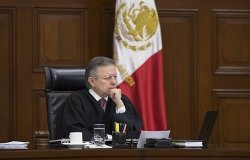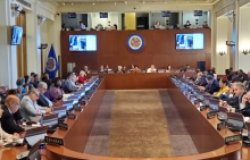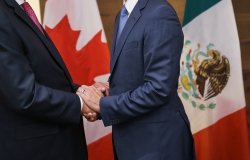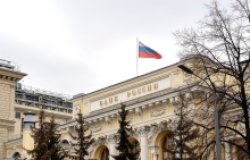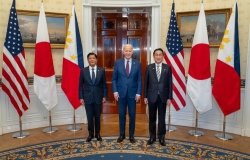Scholar Says Politics Hinder Educational Reform in Peru
Peru's former Minister of Education Nicolas Lynch discusses challenges to education reform in his country.
Improving the quality of education in Peru has proven to be an arduous task, as Nicolas Lynch can attest to firsthand. He has spent the past four months as a public policy scholar at the Wilson Center, writing about the politics of educational reform in Peru and his own futile efforts to transform the system.
Lynch has taught politics and social theory at the University of San Marcos in Lima for the past 26 years and currently is director of the university's Ph.D. program in social science. In 2001, he was appointed minister of education, and entered the post enthusiastic about the opportunity to revamp basic education in his country. He and his team soon launched an educational reform program, one that would provoke the government to oust him one year later.
"The most important challenge to educational reform in Peru is political," Lynch told Centerpoint. "The political cost of launching any social sector reform is high."
Basic education in Peru, for students ages 4–17, is almost universal at the primary school level, and fairly high at the secondary school level as well at nearly 85 percent. "The problem is not the quantity of coverage but the quality of education," said Lynch.
Peru is a nation of 28 million people, 8 million of whom are students. Peru now invests about $230 per student for the nearly 7 million public school students in the country, said Lynch, whereas New York City, for example, invests more than $8,000 per student. Overall, Peru's public school expenditures also are much lower than some of its South American neighbors, including Brazil and Argentina.
How do Peruvian students fare compared to their peers around the world? In 2000, UNESCO (the United Nations Educational, Scientific, and Cultural Organization) tested 15-year-old students in 43 countries around the world in math, reading, and scientific literacy. In that exam, the Programme for International Student Assessment (PISA), Peru placed last.
The following year, Lynch became minister of education and, acknowledging the education system was in a state of crisis, launched several new programs. The most important, he said, was one attempting to advance teachers' careers based on merit. He proposed that career advancement and tenure no longer be automatic but rather depend upon teacher testing. While public opinion seemed to support this move, the teacher's union was bitterly divided. Despite some resistance, the plan was partially implemented.
During his year as minister, Lynch and his coalition proposed other programs, including primary education reform in rural areas and another to get Internet access for secondary schools in urban areas.
But in a nation where only 17 percent of the labor force is on the payroll—most Peruvians find work in the informal economy, particularly as vendors—it remains difficult for students to relate education to future employment. Despite this challenge, Lynch spoke of recent efforts to connect secondary education with vocational training.
Ironically, education is the top line item in Peru's national budget. "But politicians don't care about the state of the system," said Lynch. "They care about the promise to build new schools, and create new positions and elevate salaries for teachers—all promises they cannot fulfill. There is great need for a political force to produce change."
